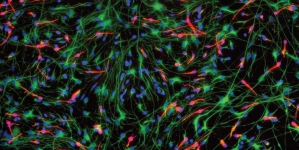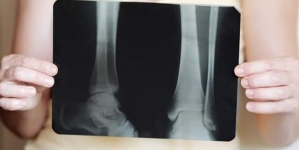-
HARARE: Shri Bramha Kumar appointed as the next Ambassador of India to the Republic of Zimbabwe - 3 hours ago
-
LONDON: Indian-Origin Principal Wins UK Legal Challenge Over School Prayer Ban - 6 hours ago
-
TORONTO: Indian-Origin Doctor Needs ₹ 2 Crore For Legal Fees. Elon Musk Responds - 1 day ago
-
KINSHASA: India-Democratic Republic of Congo Foreign Office Consultations - April 21, 2024
-
LONDON: UK Court Allows Sale Of Nirav Modi’s Luxury London Apartment - April 21, 2024
-
TEHRAN: Travel advisory for Iran and Israel - April 20, 2024
-
LUXEMBOURG: Shri Saurabh Kumar concurrently accredited as the next Ambassador of India to the Grand Duchy of Luxembourg - April 20, 2024
-
WASHINGTON: Meet Jigar Shah, Indian-American Named In TIME Most Influential List - April 20, 2024
-
LONDON: What Impact Will New UK Family Visa Rule Have On Indians - April 20, 2024
-
TORONTO: The American Dream: Why Indian Students Continue To Flock Abroad - April 19, 2024
BERLIN: Don’t ignore persistent headache – It could be a brain tumour!
BERLIN: Headaches are a common health
problem that most people experience at some point in their lives. It can be
caused due to several reasons the commonest being stress and fatigue. Other
causes are extreme anxiety and depression, lack of adequate sleep, hunger,
dehydration, poor eyesight and excessive consumption of alcohol among other
factors. Headaches may be totally innocuous on one end of the spectrum or may
be caused by sinister causes like brain tumour, brain hemorrhage or serious
brain infection.
The commonest headaches are
tension headaches which are comparatively mild and often feel like a tight band
around the head or heaviness of the head. They often occur later during the day
and may be precipitated by a bad day in the office, a fight with a loved one or
worry about some issue. All one needs to do is to take it easy, relax your
mind, and if needed take some paracetamol and sleep it off. Such headaches have
often been present for a long time and can be correlated with a stressful
situation. In between these headache episodes the person is usually absolutely
normal.
Migraines and other vascular headaches are usually more severe and are
characterized by intense, pulsating throbbing pain, often accompanied by nausea
and vomiting and the patient has extreme sensitivity to light and noise. They
may be localised to one side of the head but more commonly may affect both
sides. They occur in young adults and the intensity and frequency reduce when
the patient becomes forty or fifty. A characteristic feature is the episodic
nature of the headache which is severe and lasts for several hours or even for
a couple of days. A variety of drugs are available to abort an acute attack, to
alleviate the symptoms if an acute attack has come and to reduce the occurrence
of the acute attacks if they are frequent.
While most headaches do not have serious consequences and are not fatal, in
certain cases they may signal a serious health condition. Brain infections like
meningitis may present with severe headache, vomiting, seizures and alteration
of sensorium. The infection could be acute usually caused by a bacteria, may
have a short history of a few days and rapid progression of headache with high
fever.
A chronic meningitis could have a
longer history of several weeks or months and the progression is slow with low
grade fever. This is commonly caused by tuberculosis or fungal infection. Both
acute and chronic meningitis are associated with stiffness of the neck and
painful restriction of neck movements.
Brain aneurysms and headaches
An aneurysm is a weak spot or ballooning in the blood vessels of the brain.
It can leak or rupture – causing bleeding on the surface of the brain
(subarachnoid hemorrhage) or in the brain tissue (intracerebral hematoma). At
the time of the rupture the person has a sudden and severe headache often
described as the worst ever headache experienced.
This is often associated with
neck stiffness and vomiting. If the bleeding is severe it may cause the patient
to lose consciousness or even die suddenly. The hallmark of the headache caused
by aneurysm rupture is the hyperacute sudden onset in a few seconds or minutes.
A small unruptured brain aneurysm may not exhibit any symptoms and therefore
remains undetected. A larger unruptured aneurysm may create pressure on brain
tissues and nerves, causing pain or a neurological deficit.
There are two common treatment options for a ruptured brain aneurysm:
• Surgical clipping is a procedure to close off an aneurysm. This involves
removing a section of the skull to access the aneurysm and locate the blood
vessel that feeds it. A tiny metal clip is then placed on the neck of the
aneurysm to stop the flow of blood in the aneurysm while maintaining onward
blood flow through the vessel.
• Endovascular coiling is a less invasive procedure as compared to surgical
clipping. It involves the insertion of a catheter (hollow plastic tube) into an
artery, usually in the groin area and threading it through the vessels to the
brain vessel hosting the aneurysm. Then detachable coils are inserted to
completely fill the aneurysm from inside – so that no blood flow occurs into
the aneurysm resulting in its occlusion.
The above procedures can also be used to seal an unruptured brain aneurysm as
well and helps prevent future rupture. This is the type of headache which needs
immediate treatment.
Brain tumour and headaches
A brain tumour is a mass or growth of abnormal cells in the brain. It can
be cancerous (malignant) or noncancerous (benign). Brain tumours can originate
in the brain (primary brain tumours), or cancer can begin in other parts of the
body and spread to the brain (secondary or metastatic brain tumours). The skull
is a closed compartment and when the tumour grows and occupies space, it
results in increased pressure on the inside of the skull resulting in headache.
And as the tumour grows the
pressure increases and the headache increases in intensity and frequency.
Headache is a common symptom of brain tumour and these are worse in the morning
and often wake a person up from sleep – unlike other headaches which are worse
in the evenings. Headaches associated with a brain tumour also increase due to
coughing, sneezing or exercise. They are often accompanied by vomiting or
visual blurring and double vision.
The presence of epilepsy or
seizures may also indicate a serious cause of the headache. The patient also
may have neurological deficits including weakness or numbness of an arm or leg,
speech difficulty, hearing problems or behaviour changes.
Important to differentiate the
headache of a brain tumour from a simple headache is the presence of persistent
pain which continues to increase with time, the early morning onset and
presence of associated neurological symptoms described above. The diagnosis of
the brain tumour is easily established with modern MRI imaging of the brain.
The treatment for brain tumour depends on the type, size, and location of the
tumour. Surgery is the primary modality of treatment of most brain tumours
especially if large in size. The aim is total removal of the tumour without
causing any fresh deficit. While this is achievable in most benign tumours – it
is not always possible because of proximity of tumour to a critical vessel or
nerve.
For malignant brain tumours –
even if we remove all the visible tumour – residual tumour cells may persist in
the depth which are not visible even with the microscope. These would need to
be treated with radiation therapy and chemotherapy – which for brain tumours is
usually a tablet and is easily tolerated. Not all tumours need surgery though
and some small brain tumours can be treated with Cyber Knife radiosurgery –
which is the non-invasive delivery of highly focussed radiation beams onto the
tumour without opening the head.
This is also used for small
residual tumours after surgery and for recurrent tumours. A particular type of
secretory pituitary adenoma may be treated primarily by medical therapy.
Surgery for brain tumours has advanced tremendously with the advent of newer
technology. Neuro-navigation is a computer assisted technique of knowing
exactly where the tumour is and where our instrument has reached at any point
during surgery (similar to the GPS in our car which tells us where we are at any
point of time). The presence of an intraoperative MRI machine in the operation
theatre helps us to assess the completeness of tumour removal during the
surgery and to do more removal if needed.
The use of operating microscope,
high speed drills and the ultrasonic aspirator are standard adjuncts in today’s
world. Preoperative embolization (blockage) of tumour vessels is done to reduce
the vascularity of the tumour and reduce blood loss during surgery.
Neuro-endoscopes are routinely used to make the surgery minimally invasive.
Intraoperative neuro-monitoring is used to preserve neural function. The
application of all these adjuncts has made the removal of brain tumours so much
safer and more reliable.























